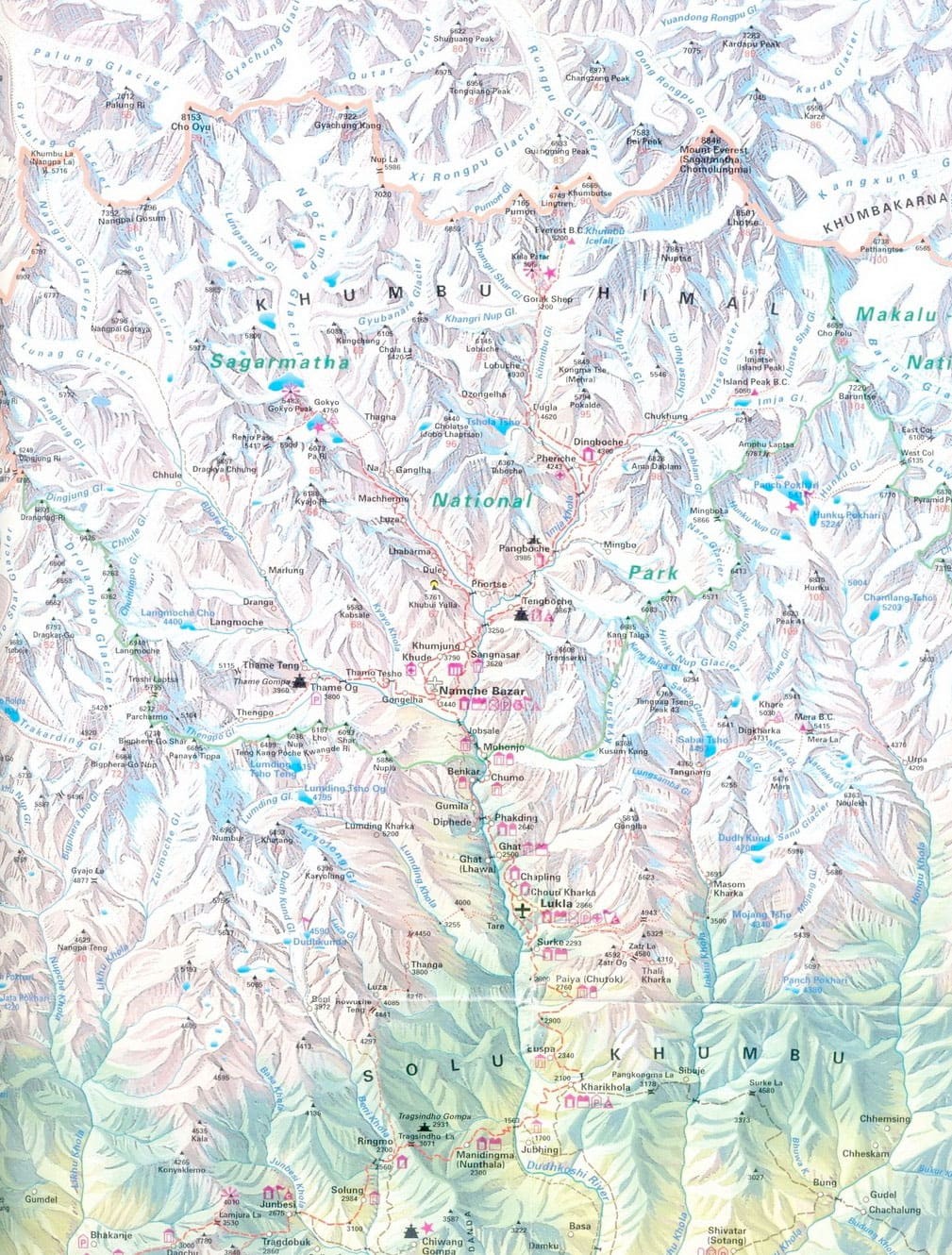Makalu Trek
8, Difficult ( technical 3 + altitudinal 5 ) | 17 Days in Nepal
-1640604184.png?p=main&s=c0269606f8ec63a13f6169c9e0a33d0b)
Difficult

17 DAYS

8,463M

Trekking

7-12 PAX

Kathmandu-Kathmandu
Makalu, the world's fifth-highest peak in the world rising to 27,765 feet (8,463 meters). This beautiful and impressive massive is situated just 14 miles east of Everest in the Khumbu region.
Its size alone is impressive, but it’s perfect pyramid structure with four sharp ridges makes this mountain all the more spectacular. Makalu is actually a double peak. The subsidiary peak rising just north of the main summit connected by a saddle is called Chomolonzo (25,650 ft.) It is interesting to note that the summit ridge is the demarcation point indicating the border between Nepal on the Southern side and Tibet to the North.
The name of the mountain was probably taken from the Sanskrit word Maha-Kala, which means Big Black and is a by-name of Shiva - one of the most important gods of Hinduism. Shiva is sometimes an evil, cruel destroyer but at other times he tends to be gentle and kind-hearted. The mountain has another name in the local dialect - Kumba Karna, which means The Giant.
Prior to its first ascent in 1955, it was admired and studied by several Everest expeditions, but like a lot of other giants in the Khumbu region, it was not attempted until the summit of Everest was first ascended in 1954.
ITINERARY
Arrival in Kathmandu.
Flight Kathmandu to Tumlingtar & Drive to Num.
Trek Num to Seduwa.
Trek Seduwa to Tashigaon.
Rest day in Tashigaon.
Trek Tashigaon to Khongma.
Trek Khongma to Dobato.
Trek Dobato to Yangle Kharka.
Trek Yangle Kharka to Langmale Kharka.
Trek Langmale Kharka to Makalu Base Camp.
Rest Day in Makalu Base Camp.
Trek back to Yangle Kharka.
Trek back to Dobato.
Trek back to Tashigaon.
Trek back to Num.
Drive Num to Tumlingtar, Fly Back to Kathmandu.
Fly to Final Destination.
Fitness Level and Technical Ability
Climbers wishing to join this expedition must already be experienced with rock and ice climbing and have successfully completed previous climbs at high altitudes, over 4500m (15,000ft).
This expedition requires excellent levels of fitness to endure the extreme conditions of summiting big peaks. To prepare for this, climbers should undergo a regular and strenuous exercise regime for at least 6 months to build their strength, stamina and endurance.
Details Information
 Price Includes
Price Includes
- Airport transfers - Pick up and drop.
- Domestic airfare (Kathmandu–Tumlingtar–Kathmandu).
- Transportation from (Tumlingtar–Num–Tumlingtar).
- 1 Nepalese English Speaking Trekking Guide for the group.
- 2 Nights on 3*** Hotel accommodations with breakfast in Kathmandu.
- Overnight accommodation in Hotel/Lodges along the trail.
- Makalu National Park.
- TIMS Permit
 Price Does not Include
Price Does not Include
- Nepal Entry Visa fee
- Lunch & Dinner during Kathmandu stay.
- Food during the trek.
- Personal Porters on the trek.
- Travel/medical insurance and emergency evacuation cost.
- Hotel after 2 nights stays in Kathmandu.
 Staff
Staff
- Nepalese liaison officer
- Cooks from Nepal
- Kitchen boy from Nepal
- High-altitude Sherpas – 1 for 2 member
(All our high-altitude Sherpas have Makalu experience. They bring all shared equipment and oxygen cylinders to high-altitude camps and accompany team members all the way form BC to the summit.)
 Weather
Weather
The weather on Makalu is very changeable. Every day we will look for forecasts on the Internet and adjust to them our planning of acclimatization and ascent.
Personal gear
Technical Equipment for the ascent
- Crampons (e.g. Grivel G12)
- Rucksack 70-80 litres
- Rucksack 35-40 litres
- Harness
- Prussiks
- Karabiners with screwgate lockers - 3 items
- Jumar (ascender)
- Telescope ski poles
- Thermos
- Rappel device
- Ice Axe
- Headlamp
- Photo camera
- Video camera and assessors
- Accumulators
- Personal crockery for high camps
Equipment for body and feet
- Trekking shoes
- Boots of "Everest" Millet type
- Gore-tex jacket with wide hood
- Gore-tex trousers (better semi-overalls)
- Windblock jacket
- Windblock trousers
- Jacket "Polartec - 100" - 2 items
- Warm underwear - 2 sets
- Personal underwear
- Polartec gloves – 2 pairs
- Thinsulate gloves
- Thinsulate mittens - 2 pairs
- Warm woollen socks - 4-5 pairs
- Balaclava
- Warm hat
- Windblock face mask
- UV glasses
- Ski goggles (preferably)
- Gaiters
CONTACT US
Kathmandu, Nepal
GPO Box: 8974 CPC 598
Phone: +977-1-4374018
info@7summitclub.com
-1633425133.png?p=main&s=e363c45ca54762bcadca52b128d107de)







